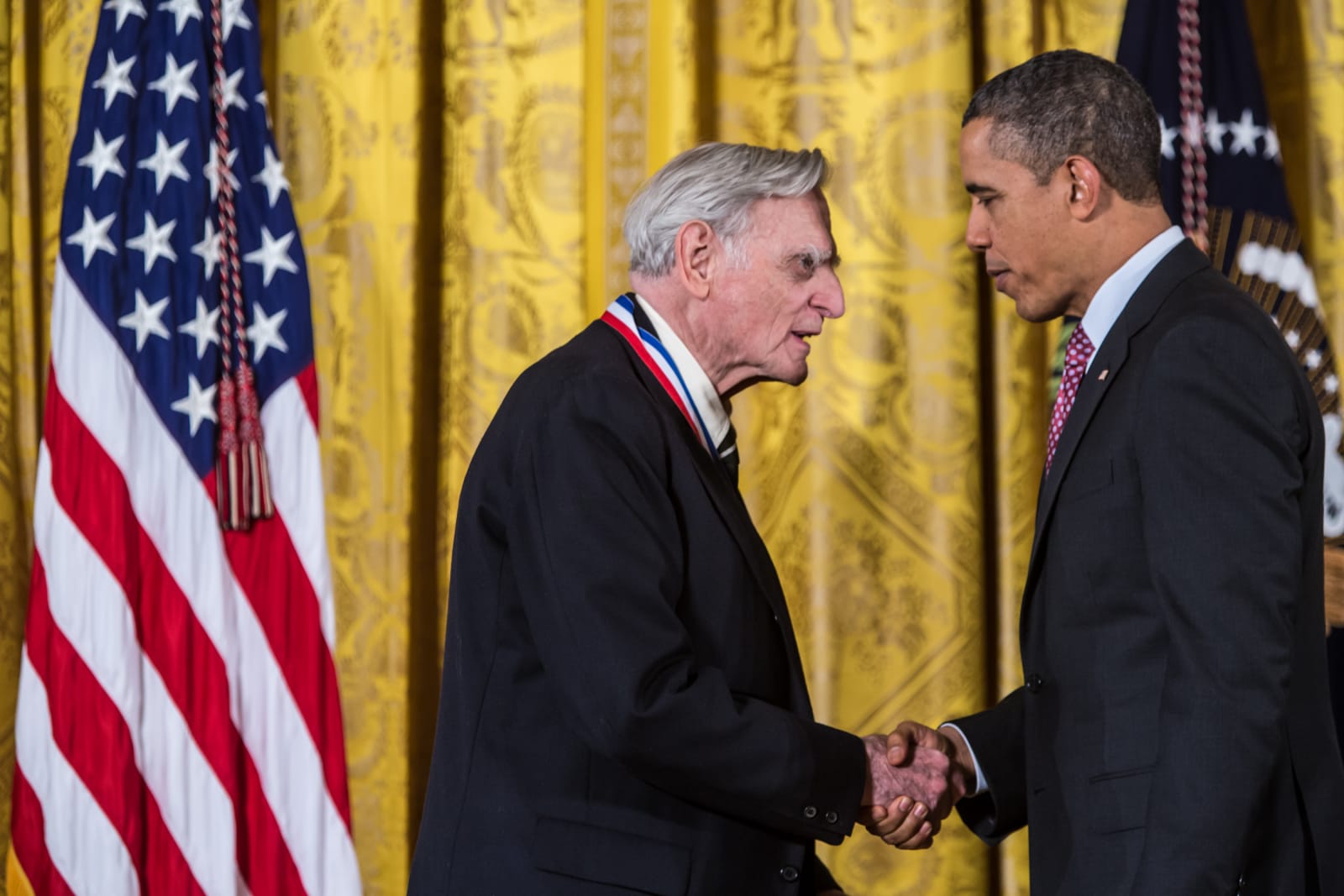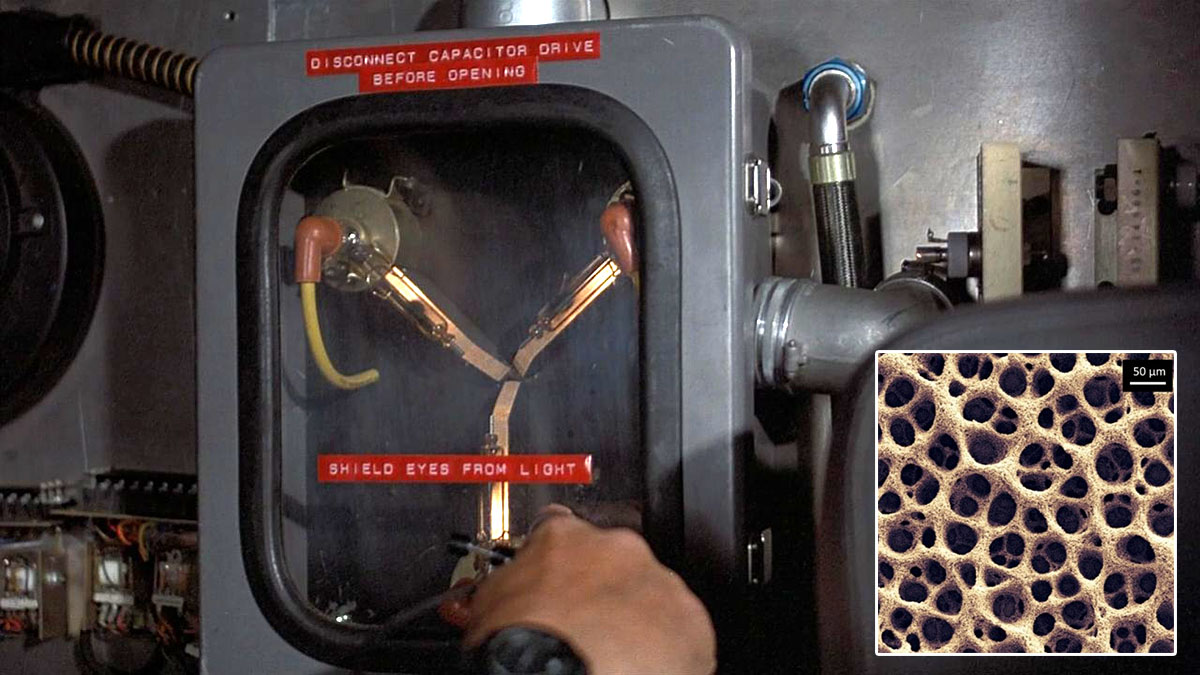
A South Korean startup will exhibit a charging wristband for the Apple Watch at the CES 2019. The Apple Watch wristband contains a Flexible Li-ion Polymer Battery.The flexible battery has a bend...
 At 94 years old, John B. Goodenough isn't done changing the landscape of battery technology. The University of Texas at Austin professor who's widely credited for the invention of lithium-ion batteries has developed a better alternative. Goodenough,...
At 94 years old, John B. Goodenough isn't done changing the landscape of battery technology. The University of Texas at Austin professor who's widely credited for the invention of lithium-ion batteries has developed a better alternative. Goodenough,...
 Scientists in Canada and France have created a micro-supercapacitor with the same energy density of a modern lithium-ion battery that could potentially last forever. Supercapacitors have long been eyed by scientists and industry leaders like Elon M...
Scientists in Canada and France have created a micro-supercapacitor with the same energy density of a modern lithium-ion battery that could potentially last forever. Supercapacitors have long been eyed by scientists and industry leaders like Elon M...
Yesterday Texas Instruments introduced a couple of new chipsets (fuel gauge an charger ICs) designed to improve the charging speed and life expectancy of single-cell Li-ion batteries. The technology, called MaxLife, is expected to provide an improvement of up to 30 percent in battery service life and faster charging times. Cell impedance is carefully monitored by the fuel gauge chip while the charger IC uses a model of battery degradation to charge the cell in the most effective way. Both chips are connected via an I2C bus to form an autonomous battery management system which, according to the company, is safer and more thermally efficient than existing solutions. The two chipsets (2.5A and 4.5A) are now available along with a development kit, so it's only a matter of time until this technology lands into handsets and other devices that use single-cell Li-ion batteries. Check out the details after the break.
Filed under: Cellphones, Misc, Mobile
There's no shortage of attempts to build a better battery, usually with a few caveats. USC may have ticked all the right checkboxes with its latest discovery, however. Its use of porous, flexible silicon nanowires for the anodes in a lithium-ion battery delivers the high capacity, fast recharging and low costs that come with silicon, but without the fragility of earlier attempts relying on simpler silicon plates. In practice, the battery could deliver the best of all worlds. Triple the capacity of today's batteries? Full recharges in 10 minutes? More than 2,000 charging cycles? Check. It all sounds a bit fantastical, but USC does see real-world use on the horizon. Researchers estimate that there should be products with silicon-equipped lithium-ion packs inside of two to three years, which isn't long to wait if the invention saves us from constantly hunting for the nearest wall outlet.
Filed under: Science
Via: Gizmodo
Source: USC
Researchers at the University of California San Diego have devised new algorithms that can cut lithium-ion battery charge times in half, help cells run more efficiently and potentially cut production costs by 25 percent. Rather than tracking battery behavior and health with the traditional technique of monitoring current and voltage, the team's mathematical models estimate where lithium ions are within cells for more precise data. With the added insight, the team can more accurately gauge battery longevity and control charging efficiency. The group was awarded $460,000 from the Department of Energy's ARPA-E research arm to further develop the algorithm and accompanying tech with automotive firm Bosch and battery manufacturer Cobasys, which both received the remainder of a $9.6 million grant. Wondering if the solution will ever find its way out of the lab? According to co-lead researcher Scott Moura, it'll see practical use: "This technology is going into products that people will actually use."
Filed under: Alt
Researchers create algorithms that help lithium-ion batteries charge two times faster originally appeared on Engadget on Thu, 04 Oct 2012 23:07:00 EDT. Please see our terms for use of feeds.
Permalink EurekAlert! |
EurekAlert! |  UCSD Jacobs School of Engineering | Email this | Comments
UCSD Jacobs School of Engineering | Email this | Comments One of the last times we saw the concept of a self-recharging battery, it was part of a high-minded Nokia patent whose ideas still haven't seen the light of day. Researchers at Georgia Tech are more inclined to put theory into practice. Starting from a regular lithium-ion coin battery, the team has replaced the usual divider between electrodes with a polyvinylidene difluoride film whose piezoelectric nature produces a charging action inside that gap through just a little pressure, with no outside voltage required to make the magic happen. The developers have even thumbed their noses at skeptics by very literally walking the walk -- slipping the test battery under a shoe sole gives it a proper dose of energy with every footstep. At this stage, the challenge mostly involves ramping up the maximum power through upgrades such as more squeezable piezoelectrics. Georgia Tech hasn't progressed so far as to have production plans in mind; it's nonetheless close enough that we could see future forms of wearable computing that rarely need an electrical pick-me-up.
Filed under: Wearables, Science
Georgia Tech develops self-charging battery that marches to the owner's beat originally appeared on Engadget on Sun, 19 Aug 2012 04:28:00 EDT. Please see our terms for use of feeds.
Permalink | Phys.org | Email this | Comments
Phys.org | Email this | Comments